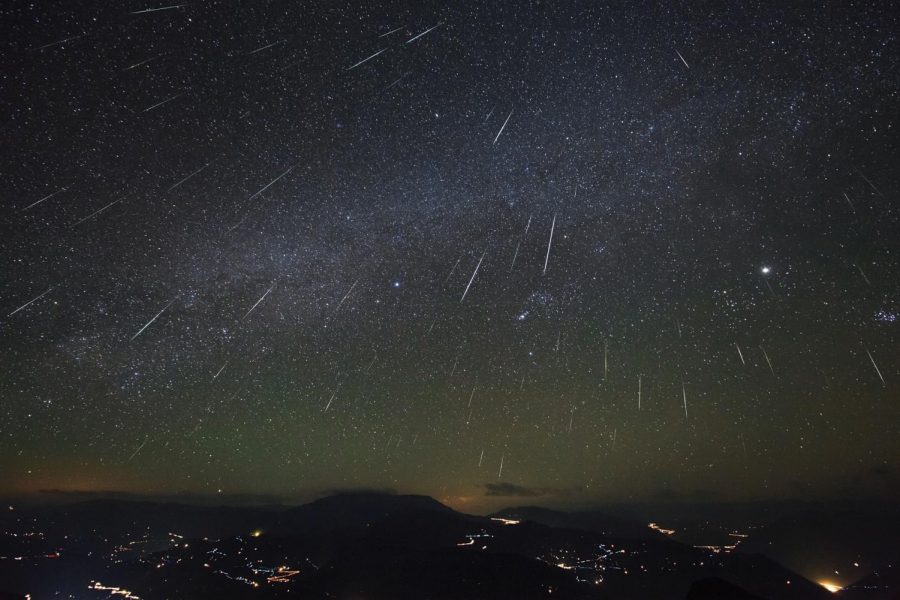Celestial Events for the New Year
Welcome 2018! Knights, it is finally the new year and personally, my 2018 definitely erupted at midnight with a blast, literally! My 2018 started with lightning dozens of fireworks in my neighborhood, followed by watching the smoke rise into the sky. The 2018 year not only started with thousands of fireworks exploding in the sky, but also a close-up view of Mercury illuminating the morning sky, a fully illuminated super moon, and the Quadrantids Meteor Shower, which lasted two days, all within the first four days of the new year. If you missed this opportunity to view this astonishing sight, don’t worry, for this year is full of opportunities to view all types of incredible, astronomy-related events.

Full moons are a common occurrence for us; however, eclipses are slightly less common and often occur at night or midday, making it difficult for one to view these beautiful sights. Don’t fret, Knights, for starting on January 31, there will be not only a full moon, but also a supermoon, and blue moon; however, it doesn’t stop there. On the same day a total lunar eclipse will take place, followed by a partial solar eclipse on February 15. If you miss the chance to view the partial solar eclipse, more will be visible July 13 and August 11, along with another total lunar eclipse on July 27.
Have you ever wanted to view Mercury, Uranus, Jupiter and its moons: Saturn, Venus, Neptune, or Mars? Well, the perfect opportunity to view these planets are upcoming all throughout 2018. Mercury will be closest to Earth, and within perfect viewing position, on March 15, July 12, August 26, November 6, and December 15. Jupiter will be visible exclusively May 9, followed by Saturn and its mighty rings illuminated by the sun on June 27. If you can’t catch a glimpse of Saturn during the day, don’t worry! This mighty planet will be visible all night long. Starting July 27, Mars will be illuminated by the sun and its red surface will be also visible all night long, along with a sighting of Venus on August 17, visibility of Neptune on September 7, and Uranus on October 23. These planets are a great opportunity for stunning photographs and unforgettable memories.
The old saying goes, “April showers bring May flowers”, and even though Arizona doesn’t usually experience these “April showers”, we, along with the other states, experience meteor showers. These, in my opinion, are much more entertaining than rain storms. On April 22 through April 23, the Lyrics Meteor Shower will occur, illuminating the night sky with about 20 meteors per hour, at the peak of the shower. The best time to view this will be just after midnight, for the first quarter moon will leave dark skies so the meteors coming from the constellation Lyra will be visible. Following this second meteor shower of the year, on July 28 and July 29, the Delta Aquarids Meteor Shower will light up the sky with about 20 meteors per hour. About two weeks after the Delta Aquarids Meteor Shower, the Perseids Meteor Shower,

one of the best meteor showers to observe and capture pictures of, will produce about 10 bright meteors per hour, originating from the Perseus constellation. This annual shower starts July 17 and ends August, with a peak on the night of August 12 and during the morning of August 13. Months later, on the 8 of October, the minor meteor shower, Draconids Meteor Shower, will produce about 10 meteors per hour. This is an annual event starting October 6 and ending October 10; however, the best time too view this shower is October 8, with the clearest viewing in the early evening. This shower will come from the constellation Draco but can appear anywhere in the sky. Toward the end of October, specifically October 21 through October 22, the Orionids Meteor Shower will produce about 20 bright meteors per hour. The Taurids Meteor Shower is a minor shower, which will follow the October events, on November 5 and November 6, consisting of two different streams, which are produced by debris left by the Comet 2P Encke. Following this minor shower is Leonids Meteor Shower, taking place November 17 and November 18.

This shower has a “cyclonic peak about every 33 years” where hundreds of meteors are visible per hour. The last “cyclone peak” occurred in 2001 with meteors radiating from the Leo constellation. Closing out 2018, the Ursids Meteor Shower will reach its peak right before the Christian holiday, Christmas, on December 21 through December 22. The annual meteor shower starts December 17 and ends December 25, with the meteors coming off of the Ursa Minor constellation.
Our 2018 year is definitely looking to be a year packed with numerous events, ranging from full moon to meteor showers. They offer great photo opportunities, breathtaking views, and unforgettable memories.
http://www.seasky.org/astronomy/astronomy-calendar-2018.html
https://apod.nasa.gov/
https://notableinklings.files.wordpress.com/
http://blogs.discovermagazine.com/





